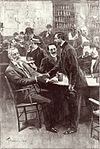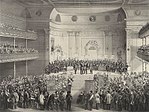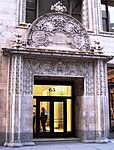640 Broadway
640 Broadway (also known as 172 Crosby Street or 60-74 Bleecker Street) is a 9-story neoclassic construction located in the NoHo Historic District of lower Manhattan, New York City. This current structure replaced a former building that housed the Empire State Bank. After a fire destroyed the site in 1896, B. Lichtenstein, who owned the property since 1886, commissioned German architects Delemos & Cordes to redevelop the lot. Known for their Renaissance Revival and Classical Revival style, Delemos & Cordes contributed a number of properties to the Ladies Historic District, most notably the Siegel-Cooper Department Store (1896-1898) and Adams Dry Good Store (1902). The team is also responsible for the design of Macy's Herald Square, a landmarked retail space in Midtown Manhattan.
Excerpt from the Wikipedia article 640 Broadway (License: CC BY-SA 3.0, Authors).640 Broadway
Crosby Street, New York Manhattan
Geographical coordinates (GPS) Address Nearby Places Show on map
Geographical coordinates (GPS)
| Latitude | Longitude |
|---|---|
| N 40.726307 ° | E -73.995768 ° |
Address
Bayard Building
Crosby Street
10012 New York, Manhattan
New York, United States
Open on Google Maps









